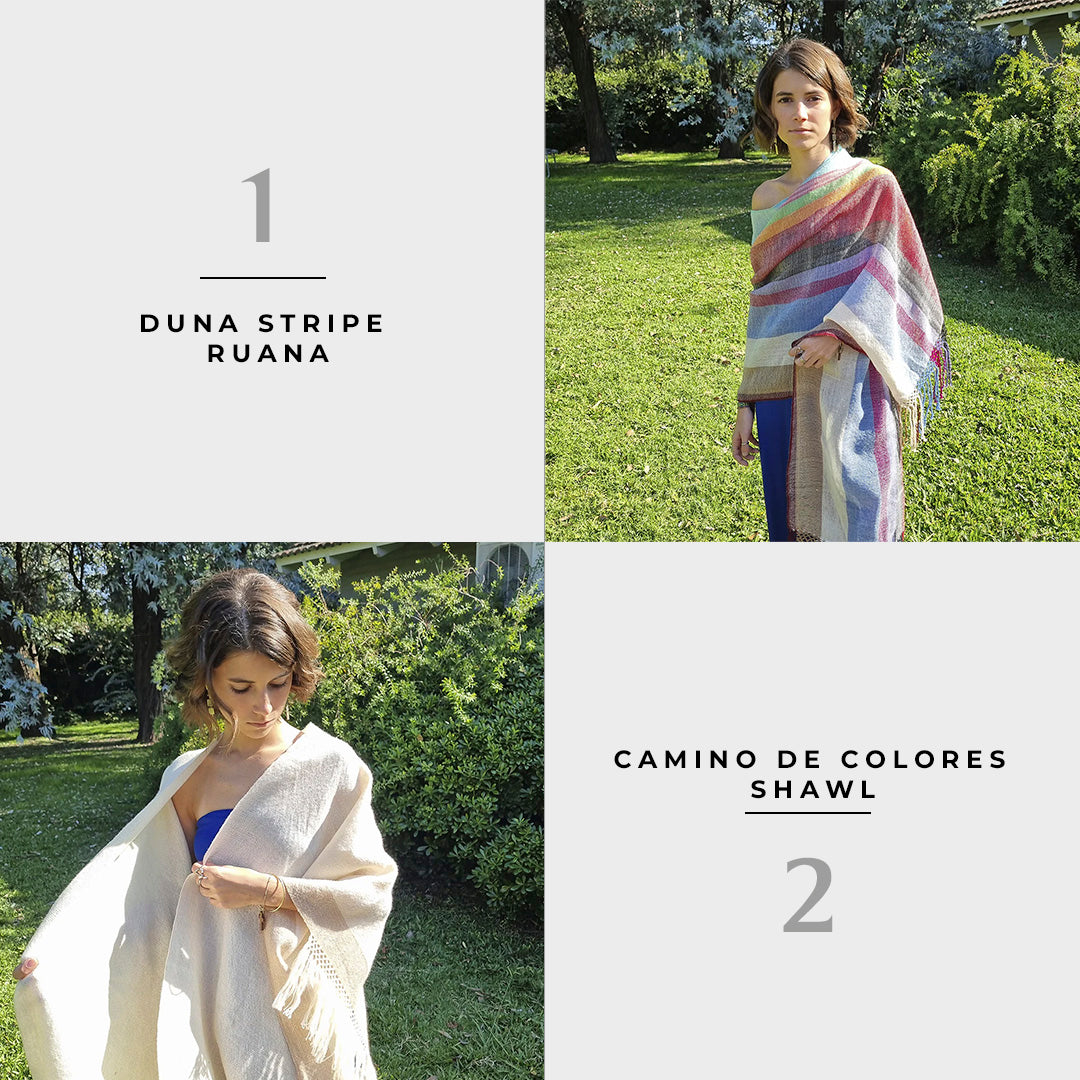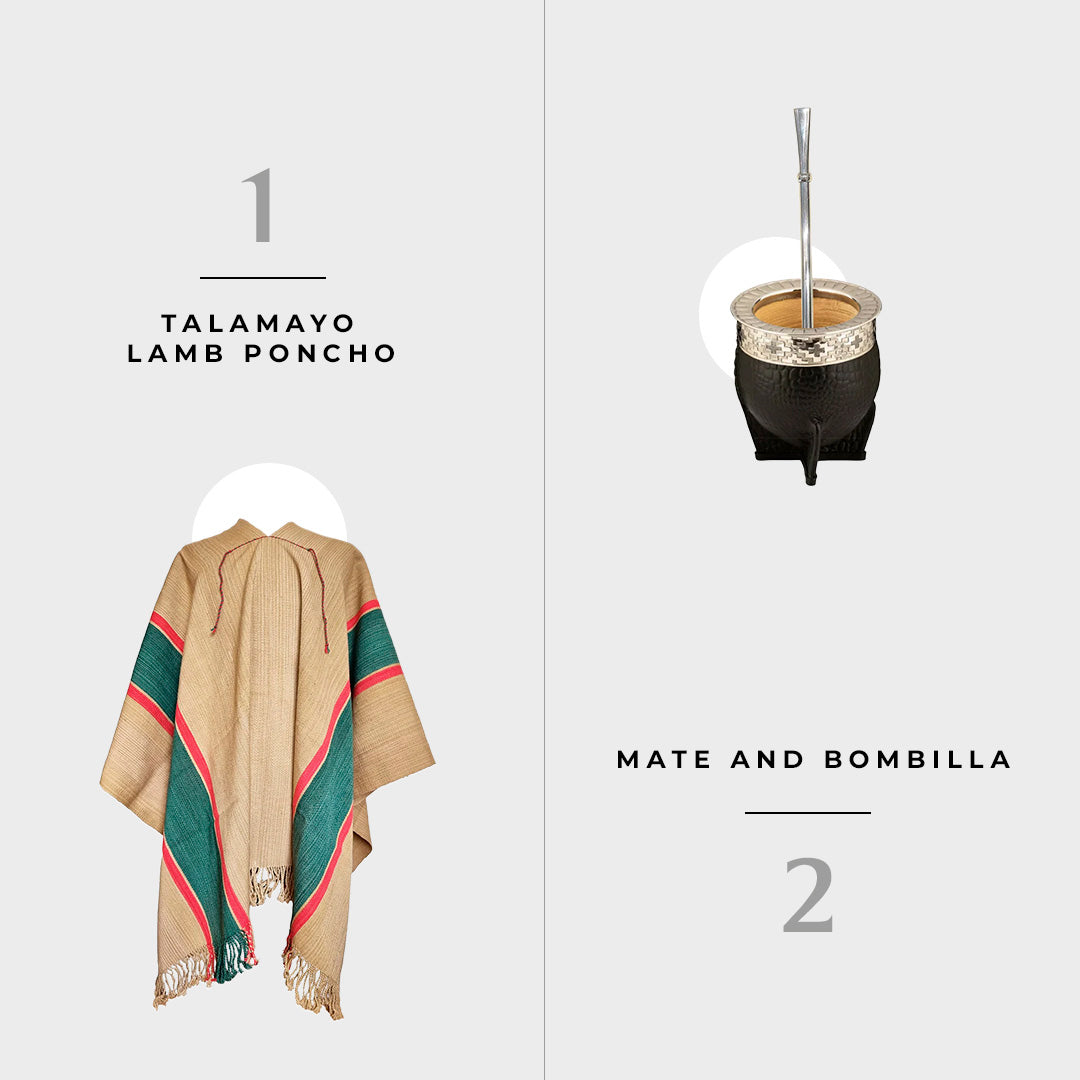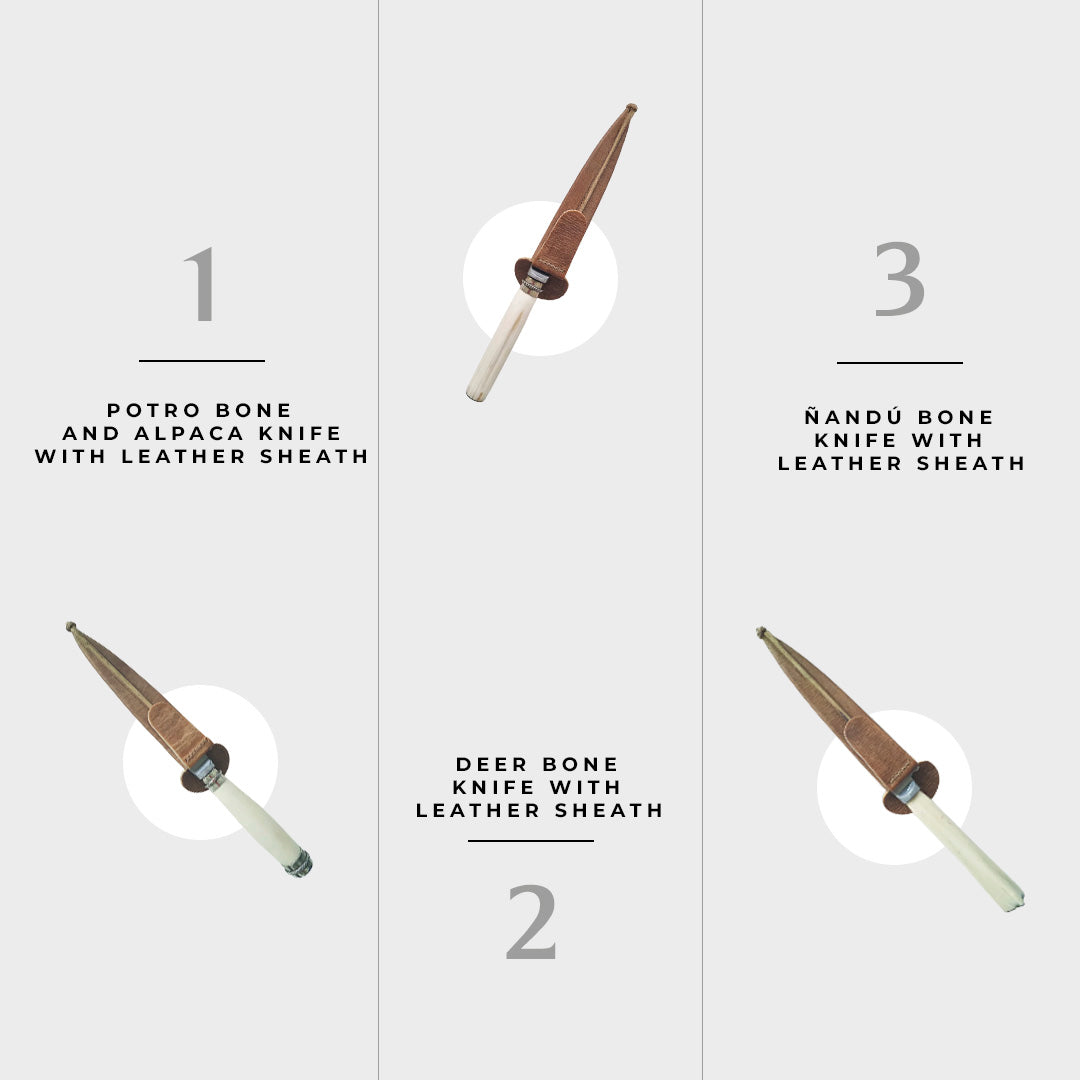The gaucho was a virtually nomadic character who covered the broad pampa working with the cattle. He may have settled for some periods of time in his rancho (a small, rustic abode in the open country) but he would finally go back to his cattle ranching activities.
He was undoubtedly someone with few material possessions, among them his horse, his mate, his poncho (which served both as an overcoat and a blanket), the rastra (a wide belt decorated with coins, etc.) around his waist and with what was a basic element: “his knife”.
It’s impossible to imagine the figure of the gaucho without his knife. It was probably his most necessary possession. It was used in the most diverse situations. When it came to eating, it worked as his knife and fork, and it was also used to kill the animal.
Moreover, it was too used to craft leather works in general that the gaucho needed to control his horse and for his work around the farm (reins, bridle, lassos). Today artisans who work on leather still use it to cut the leather strips, braid the leather, or emboss and cut the leather in strips. It was used to defend against possible wild animal attacks and in the work with animals it was not only used to kill but also to castrate, make jerky, skin and butcher the animals.
Another use for the Gaucho knife was to cut branches for fire, prepare sticks, stakes and general work with wood.
The knife is a cultural legacy from Europe for the gaucho that arrives with the first conquistadors which is progressively enriched and acquires its own identity. The knife used to be carried inside the boot or at the waist above the kidneys with the hilt showing to the right.
There are several kinds of knives, among them: the facón, the caronero, the verijero and the knife itself.
Facón: It’s really a dagger. It has a full cutting edge and a counter bevel, usually a 30 centimeter blade, which made it uncomfortable to take out and use as a utensil or tool. The blade had a proportional width, although never very wide. The hilt was strong, usually of horn, bronze or in the luxury ones, silver.
The sheath was in accord with the quality of the knife: raw leather with a braided leather rim, without cut strips and bronze or silver bolts.
Caronero: This was a large facón (with a blade of up to 65 centimeters) very useful to kill cattle. Given its size, the gaucho couldn’t have it at his waist, so he had it with the saddle kit.
Verijero: This was a knife with a small, comfortable blade used by the gaucho to castrate, cut tobacco, etc. It was carried in front on full view on the right side with the hilt outwards visible above the rastra.
Knife: This one had a wide blade, 25 centimeters long, with the cutting edge and the point facing upwards. It was the ideal tool and instrument for the man on the land. The gaucho carried it as a facón, crossed over his kidneys with the hilt over the right elbow.
This element made out of several materials such as wood, leather, alpaca and silver and the horns or bones of certain animals. Originally this was a rustic element that was gradually perfected in its finish and aspect. Nowadays it is still a work tool for men on the land, as well as being exquisite artisanal pieces that are with us during the asados and the more refined dining tables and they are a part of expensive and magnificent collections.











0 comments